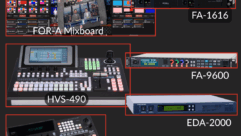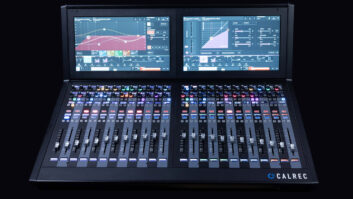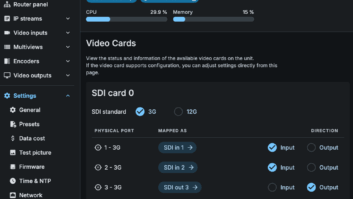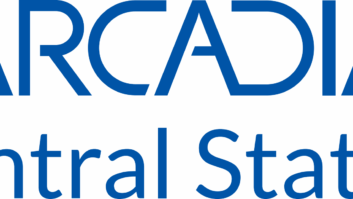
Roland Edirol V-440 HD
Aug 1, 2006 12:00 PM,
By Jeff Sauer
Video mixer bridges the SD-to-HD technology gap.
As a journalist and a product reviewer, I’m impatient by vocation and critical by nature. I’ve never been taken by transitional products — that is, products that bridge a technology gap by helping users migrate from current technology to newly introduced, advanced technology. In a perfect world, users would just upgrade straight away without any need to look back. Backward compatibility is great, but not at the expense of looking forward.
Yet when it comes to HD and the conversion from standard-definition to high-definition video production, the transition is inevitably a longer-term prospect, and one that will take most users several years and several equipment purchases. Roland’s Edirol V-440 HD unit is a video mixer that has been designed specifically to help make that transition easier. Certainly, if you’re doing live-event production and are thinking about starting a migration to HD, the V-440 HD might be one of the first purchases you should consider making.
The Edirol V-440 is an HD/SD video mixer that accepts both standard-definition and high-definition sources. It also includes a built-in upconverter that allows you to mix feeds from your current SD cameras directly with HD sources as you acquire them, as well as computer sources, and display both on the same (or multiple) HD displays.
TWO MIXERS IN ONE
Although the Edirol V-440 HD allows you to mix video sources, such as live camera feeds and DVD players, with computer sources, it’s really more of a video mixer than a presentation switcher. It has the traditional fader bar for executing transitions, joystick and knob controls for picture-in-picture and keying effects, and a variety of wipes that are accessible with the touch of a button. All those tactile features afford it more fluid control of professional video production than the button-based front panel of typical AV presentation switchers.
However, there is one obvious departure from traditional video mixers: Edirol is two mixers in one. It’s literally split in half down the front of the panel, with the blue highlighted left side handling SD sources and the silver highlighted right side accepting HD. Each side has four dedicated inputs: S-Video and composite for the SD side, and RGBHV, HD component, or 15-pin RGB for the HD side. Each side has its own two video buses, picture-in-picture controls, keys, and effects fader bar.
Naturally, the two sides can, and do, work together, but intriguingly, they don’t have to. For example, if you’re working with just SD sources, you can use the V-440 as a straight SD video mixer. It has dedicated SD outputs so you can go straight to an SD tape deck. Yet, the SD side of the V-440 is also an upconverted source for the HD side. The SD A/B bus appears as dedicated source buttons on both of the HD buses, thereby integrating an upconverted mix of your SD sources with newer HD material.
The somewhat odd exception, given the premise of SD output to tape, is that SD component sources must come in via the BNC connectors on the HD side. The same holds true of RGB computer sources, whether they’re 15-pin or 5-BNC RGBHV. Neither of those sources can be output to the SD side of the V-440, and that’s awkward. On the other hand, splitting the V-440 into two sides means that Roland doesn’t have to build in an 8×8 matrix switcher to handle all inputs all the time, and that helps keep the cost down.
One place Roland doesn’t appear to have cut costs is with the quality of upconversion and scaling. I put a number of test patterns at a variety of resolutions from an Extron VTG 400 programmable video and audio test generator through various HD and SD inputs and all three output formats (RGB, 1080i, and 720p); most look very clean. I was particularly impressed by the quality of scaled computer sources, even when scaling text dramatically within a picture-in-picture effect. For example, text remained so sharp that, at one point, I actually checked and answered email with the computer source at quarter-screen resolution inside a picture-in-picture effect. That’s cleaner processing than many dedicated scalers I’ve seen.
I also like that the V-440 allows you to make and save adjustments to individual inputs. Mixing such a wide variety of source material will almost invariably expose color and luminance inconsistencies, some of which could look awkward when switched back and forth. The V-440’s menu structure, accessible through the SD preview output, allows you to adjust brightness, contrast, hue, and color for SD sources and individual RGB values, as well as saturation, contrast, brightness, XY, phase, and more for HD sources.
There is also excellent control of picture-in-picture placement for both SD and HD, each with five default positions available at the touch of a button, but also a joystick for exact position and a knob for size and zoom. There are also six wipe pattern buttons on each side of the mixer and 15 panel preset buttons that allow you to save specific effects, including timing. Like typical video production switchers, you can manually execute transitions and effects with the fader bar or set a transition duration and use the auto button.
The biggest omission in the V-440 is probably the lack of any graphics channel or still-store capabilities, and thus no ability to fade to a graphic in case of dire need due to camera failure or some unexpected occurrence. There is a dedicated output fade button and timing knob for going to blackout at the end of show, and that’s an alternative, but it never hurts to have a graphic on cue as an elegant fallback. An RGB computer input on one of the channels can also work, but there’s more that could go wrong with that.
Still, the Edirol system does find a nice balance between cost and functionality, particularly as a smart transition product as more mid-range video production starts to go HD. It’s just not practical to expect most users to dump their SD gear in favor of all-new HD cameras, switchers, and displays. The V-440 HD makes a one-step-at-a-time approach a lot more practical. There are, of course, other video mixers on the market that handle both HD and SD sources, and they do it more elegantly with universal inputs. But you probably won’t find one with the same feature set as the V-440 for such a low price.
PRODUCT SUMMARY
Company: Roland www.edirol.net
Product: Edirol V-440 HD
Pros: Handles both SD and HD, separately or together, excellent scaling quality.
Cons: Component SD and RGB run through HD side, therefore not affording SD output to tape.
Application: Mid-range live performance/presentation mixing.
Price: $12,995
SPECIFICATIONS
Video formats
- SD: NTSC or PAL (S-Video, composite, component via HD inputs)
- HD: 1080/59.94i/50i, 720/59.94p/50p
- RGB/RGBHV: 640×480/60/75, 800×600/60/75, 1024×768/60/75, 1280×768/60/75, 1280×1024/60
Video samplings
- SD: 4:2:2, 8-bit
- HD: 4:4:4, 8-bit
- RGB: 4:4:4, 8-bit
Video effects
- Cut
- Dissolve (MIX)
- Wipe (six patterns)
- Reverse
- SoftEdge
- OneWay
- Picture-in-picture with zoom/pan
- Chroma Key (blue/green)
- Luminance Key (white/black)










